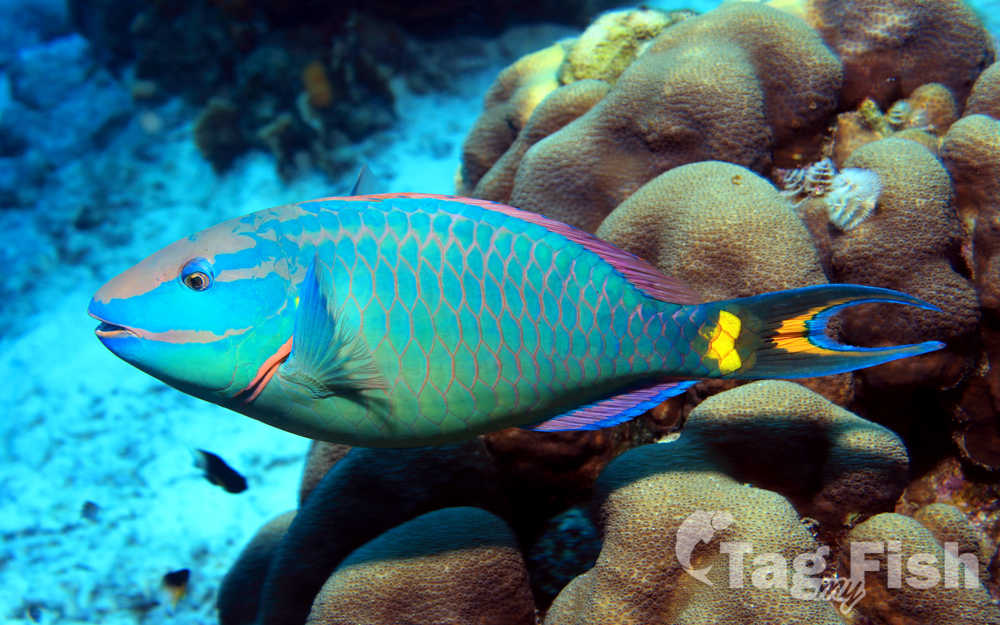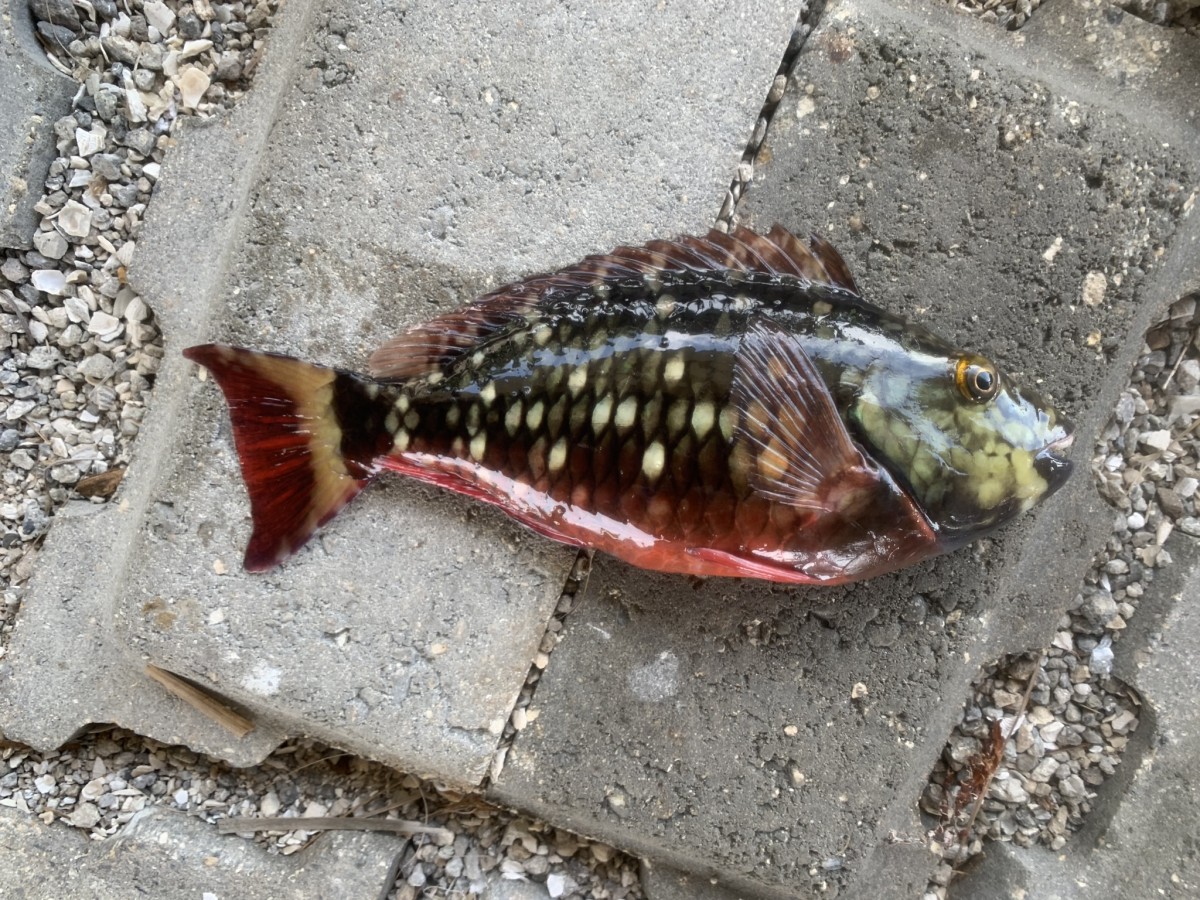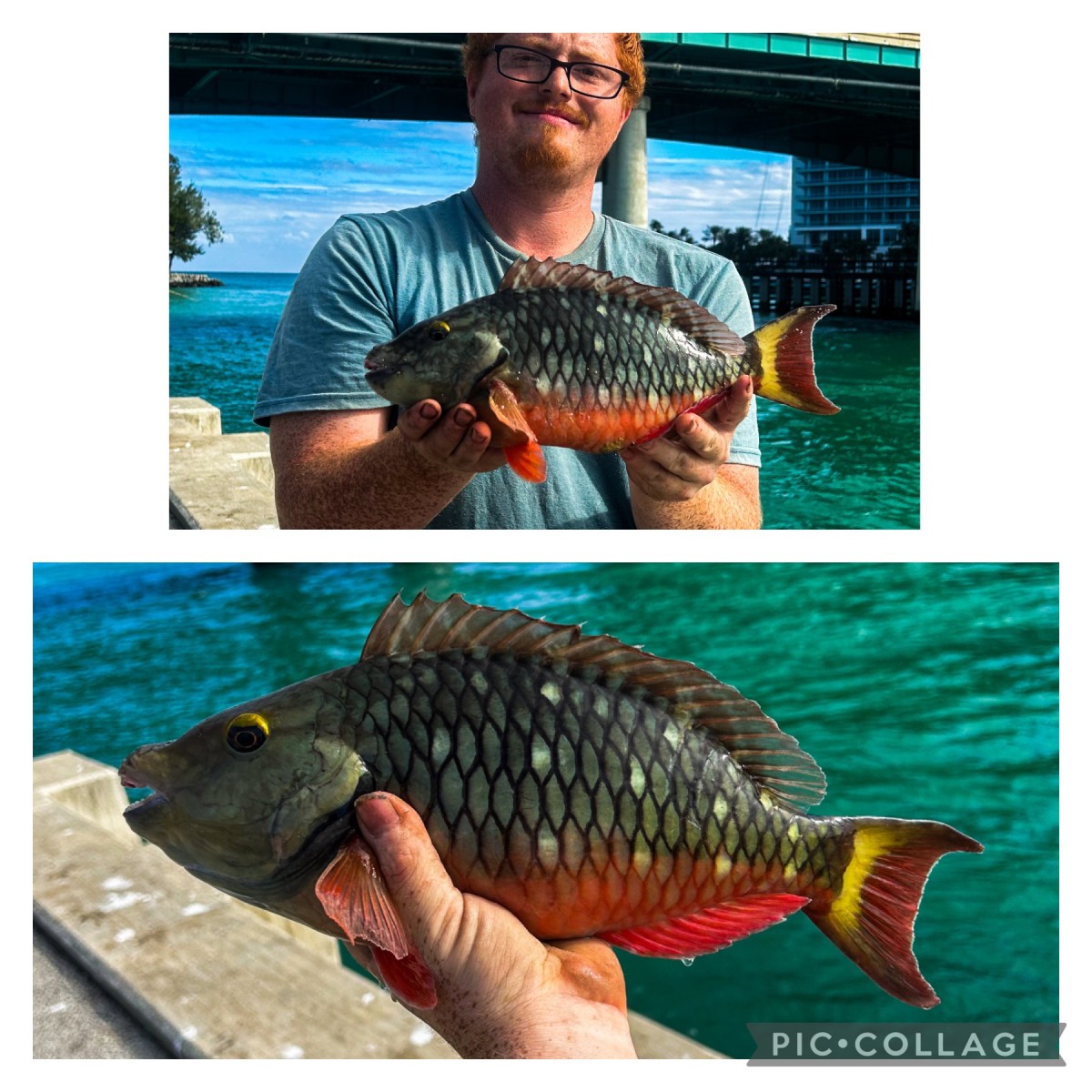Stoplight parrotfish
(Sparisoma viride)

Classification
General data
The stoplight parrotfish (Sparisoma viride) is a species of marine ray-finned fish, a parrotfish from the family Scaridae, inhabiting coral reefs in Florida, Caribbean Sea, Gulf of Mexico, Bermuda and as far south as Brazil. It mainly feeds on algae by scraping and excavating it with its teeth. Like most of its relatives, it is able to change sex.
The common name, stoplight, comes from the marked yellow spot near the pectoral fin, which is clearly visible only in specimens in the terminal phase.
Sex Change & Coloring
The stoplight parrotfish is a protogynous hermaphrodite that shows full sexual dichromatism, meaning that it changes its sex from female to male during its lifespan, and its color changes with its sex change. The sex change is most likely due to the control of hormones, in particular, 11-ketetestosterone (11-KT). The timing of the sex change can vary depending on population density, growth, and mortality rates. Early sex changes may occur if sexually active individuals have a higher mortality rate or have reduced growth rates.
The stoplight parrotfish has 3 life phases: juvenile, initial, and terminal. The colors of the stoplight parrotfish in the initial phase, when it could be either a male or a female, are dramatically different from those in the terminal phase, when it is definitely a male. During the juvenile and initial phase, the parrotfishes are colored brown with a red belly. During the terminal phase, the parrotfishes are a vivid green color with yellow spots on the tail base of their caudal fin. However, some males do not change color at the same time they change sex, therefore becoming female-mimic males (also termed initial phase males). During the initial phase, about 4% of the smaller parrotfish individuals are males.
Habitat
The stoplight parrotfish inhabit shallow coral reefs not disturbed by humans in Florida, the Caribbean Sea, Gulf of Mexico, Bermuda and Brazil. They are only active during the day and spend most of their time foraging, swimming, or hovering. At night, they remain hidden under coral boulders. Large individuals typically spend more time swimming and spend a significant amount of time sheltering among crevices, while smaller individuals spend more time hovering. The stoplight parrotfish have a high density in areas of higher algal production. As adults, the stoplight parrotfish are site-attached with limited home ranges.
In the Florida Keys, the stoplight parrotfish were found most frequently in areas with high cover of the macroalgae Dictyota. They have also been found to select for the branching coral Porites porites, however Dictyota are an effective recruitment substrate when branching corals are not available.
Due to its abundance in the Caribbean, the stoplight parrotfish are very ecologically important there.













